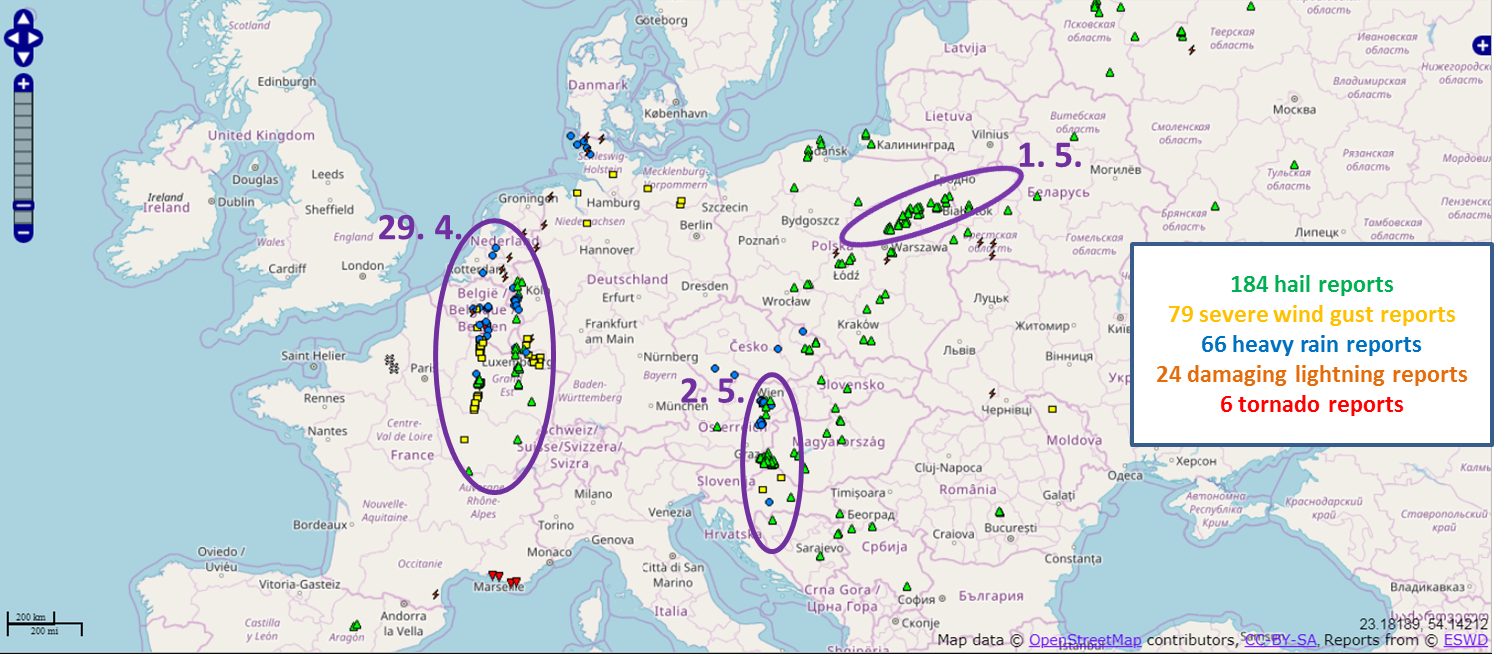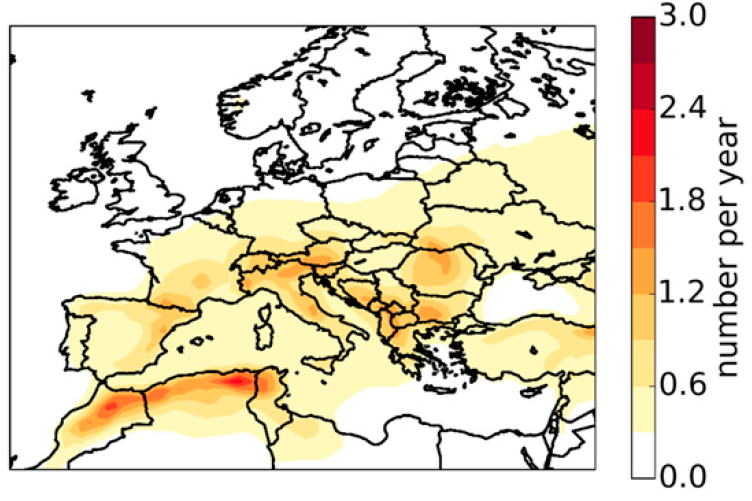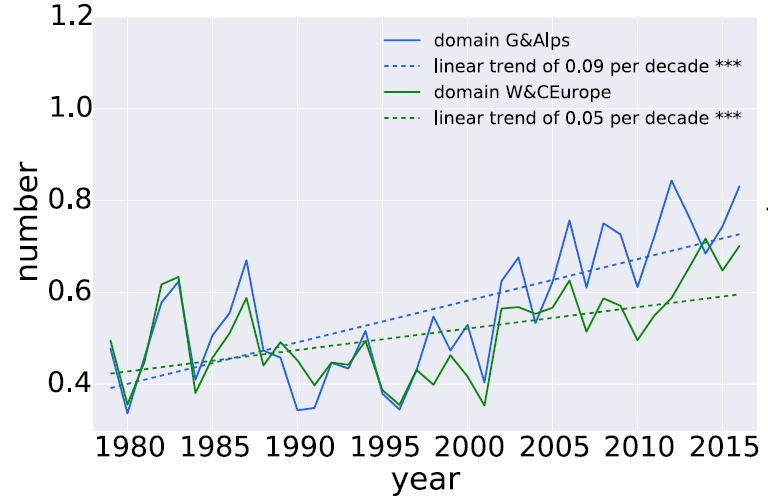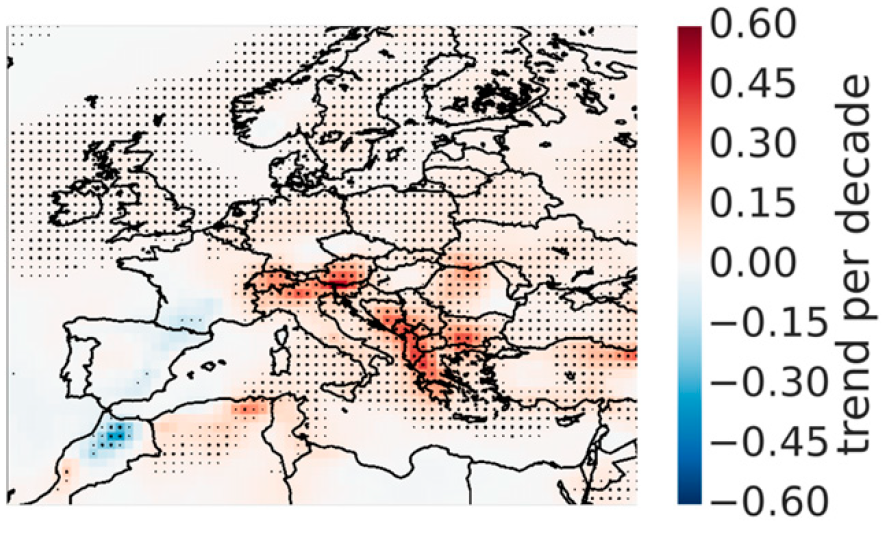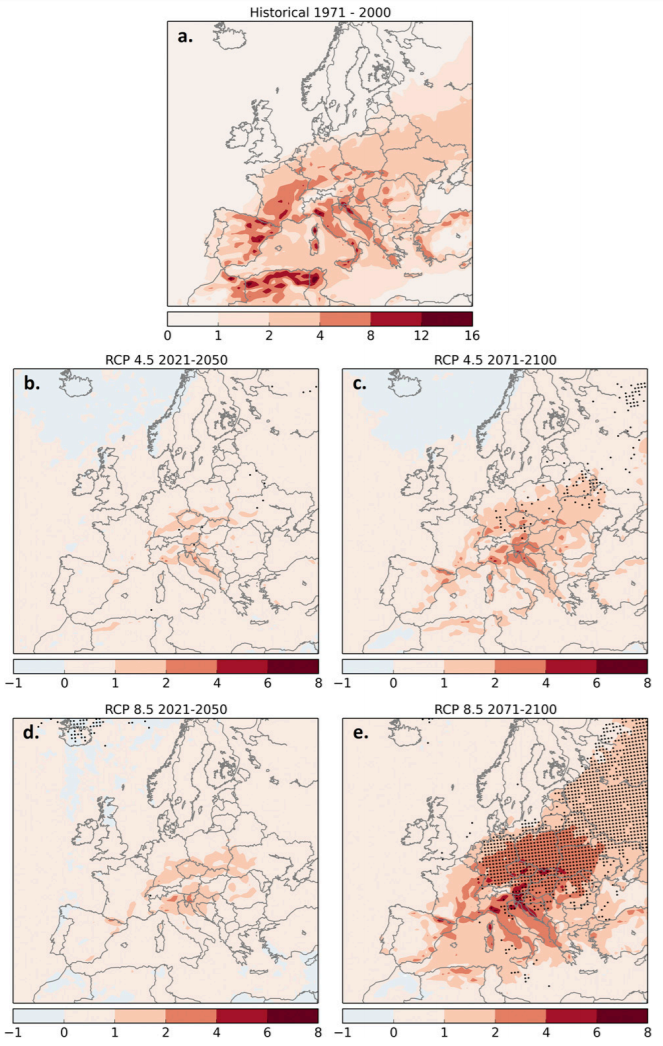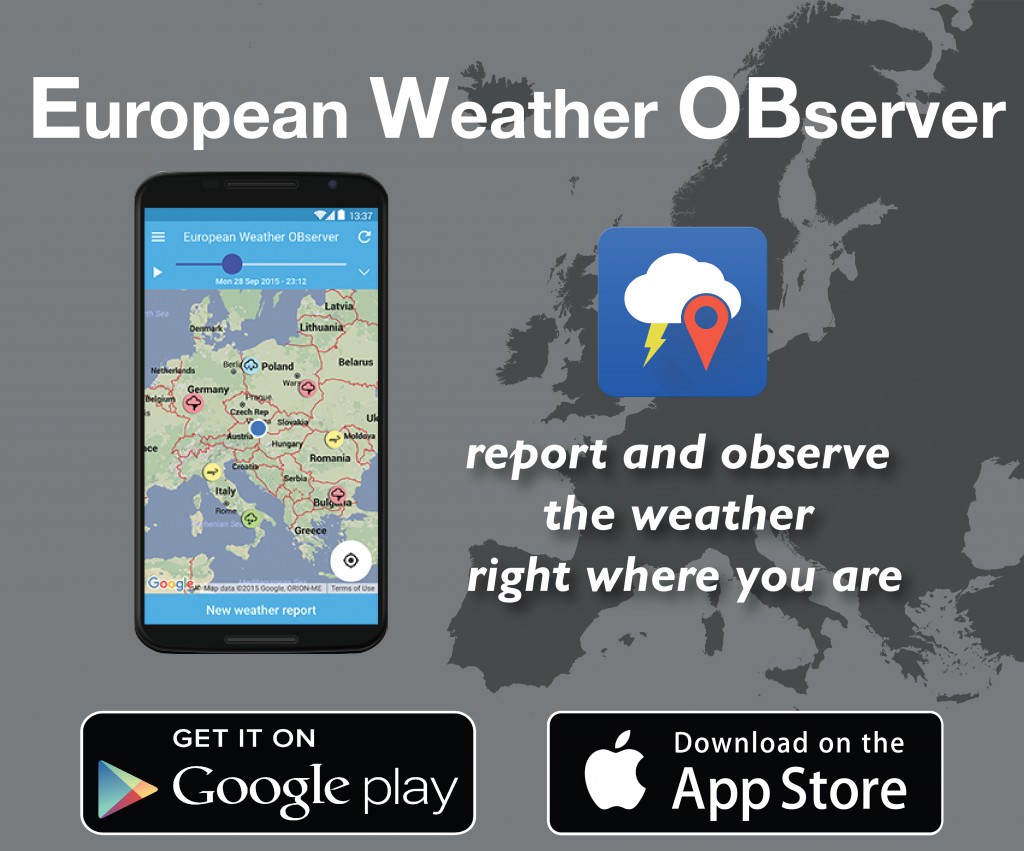Researchers at the European Severe Storms Laboratory (ESSL), Munich Re, the Ludwig-Maximilians University Munich (LMU) and the German Aerospace Centre (DLR) could show that damaging convective weather events including lightning, hail and severe wind gusts are likely to become more common across Europe until the end of this century. An increase in convective instability as a result of rising humidity near the earth’s surface was identified as main reason for the increase in hazard frequency.
They applied a set of additive logistic regression models (AR-CHaMo) to an ensemble of 14 regional climate simulations to predict the frequency of severe thunderstorms and its associated hazards in Europe under projected anthropogenic climate conditions.

They projected a slight decrease in thunderstorm occurrence in southwestern and southeastern Europe, but an increase in the probability of severe weather. Large hail (≥ 2 cm) is projected to become 40%-80% more likely across central Europe in the RCP8.5 scenario by the end of the 21st century (Figure c ) while very large hail is projected to become more likely across most of Europe, with a doubling possible in parts of central and northeastern Europe (Figure i). As a consequence of the rising hazard probabilities, risk models will need to be adapted and public warnings and precautionary measures should be issued as storms approach.
More information on this study can be found in this open access article:
Anja T. Rädler, P.H. Groenemeijer, E. Faust, R. Sausen and T. Púčik, 2019: Frequency of severe thunderstorms across Europe expected to increase in the 21st century due to rising instability, npj Climate and Atmospheric Science, DOI:10.1038/s41612-019-0083-7

